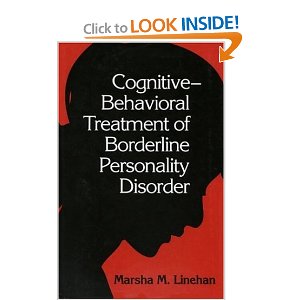
I recently completed a six-month-long training in Dialectical Behavior Therapy (DBT), a comprehensive mode of treatment developed by Marsha Linehan, Phd, ABPP for people whose intense emotions are overwhelming and lead them to use destructive behaviors (such as self-harm, suicide attempts, substance abuse, compulsive shopping or gambling, eating disorders) to regulate them. Dr. Linehan found that these suicidal and self-injuring patients struggled with traditional cognitive-behavioral therapy and because they felt invalidated by its focus of change. And yet, they also desperately wanted to change in order to stop suffering. Dr. Linehan incorporated mindfulness-based acceptance strategies into her treatment to balance out the focus on change – making it a dialectical approach.
“Dialectics” is a philosophy that sees the truth as the
synthesis of a thesis and an antithesis, meaning that we must always try to see
the “kernel of truth” in each conflicting position, thus eliminating the
seeming contradictions that keep therapists and patients “stuck” in unsolvable
conflicts. The concept of “Wise Mind” in DBT, for example, is the dialectical
integration of reasonable mind and emotional mind. Emotional balance, then, is
not achieved by denying, invalidating or exterminating emotional reactions, but
rather by balancing them wisely with reason, taking in all points of view.
DBT focuses on teaching people skills to manage difficult
emotions, deal with painful situations and improve relationships. The treatment
components include individual therapy, skills training group, skills coaching
between sessions to generalize the skills to real-life situations, and a team
treatment approach that requires the treatment be applied to the therapists as
well as the patients. Skills are taught in a class format in the following
areas, or modules: Mindfulness, Emotion Regulation, Distress Tolerance and
Interpersonal Effectiveness.
Patients are required to keep a diary card to
monitor their urges, emotions, and practice of the skills. Therapists meet
weekly as a team to enhance their effectiveness as DBT therapists.
A DBT therapist seeks to understand a behavior’s function,
thus removing the judgment about the behavior’s “right-ness or wrong-ness”, and
then coming up with solutions based on whether the behavior is caused by a
skills deficit (remediated by skills enhancement), an inability to tolerate
distress (solved by exposure), a cognitive distortion (helped by cognitive
remediation) or reinforced conditioning (solved by contingency management
strategies).
The functions of a good DBT program are to enhance the
capabilities of the patients by teaching them skills, to improve their motivation
to recover through the use of cognitive modifications and contingent reinforcement,
to assure generalization to the patient’s environment through the use of after-hours
coaching and homework assignments, to help structure the patient’s environment
to help with recovery through contingency management, and to enhance therapist
motivation and effectiveness through the use of treatment teams and consultation.
Making lemonade out of lemons is one of the “dialectical” DBT
strategies that requires a DBT therapist to take something problematic in the
client and turn it into an asset; for example, seeing problems that arise in
therapy or in life as opportunities to practice skills, or interpreting the
patient’s “resistance” to change as a strength that allows the person to persevere
until changes are made. In her textbook, Cognitive-Behavioral Therapy ofBorderline Personality Disorder, Dr. Linehan explains that her rejoicing over
someone’s expressed calamity forces the recipient to stop and take in new
information about how this event will allow the person to practice skills.
Looking back on all the many crises in my life, I see a jar full of lemonade, a
lemonade that I now serve to others who are thirsty for acceptance and change.
The Counseling Group has a team of intensively trained DBT
therapists ready to help those who are eager to find alternative ways to deal
with their suffering and want to create “a life worth living.” I am proud to be
a part of this intensively trained team. For more information about the DBT
program, please visit The Counseling Group’s DBT page or call 305-857-0050.

